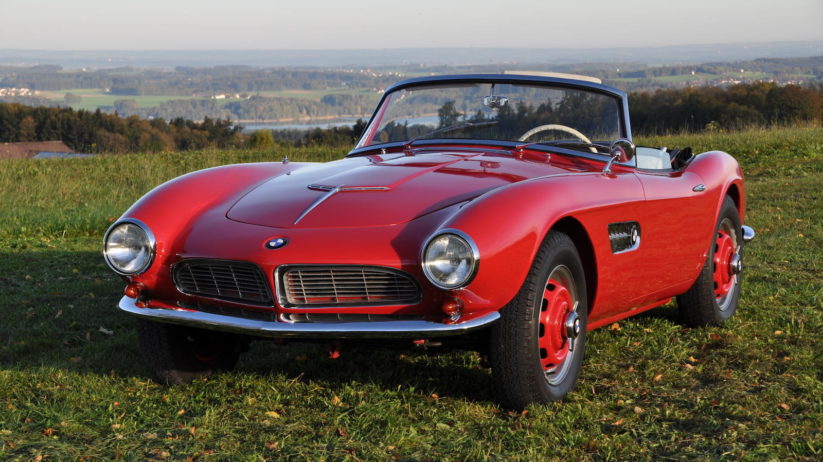Got roughly two and three quarters of a million dollars burning a hole in your pocket? 507s do not come up for sale often, and when they do, they typically demand serious money at auction. According to Hagerty, the very best examples of the extremely limited production run—just 252 were made in total between the first and second series from 1956 until 1959—transitioned from being million-dollar cars sometime around 2012 or 2013 to attracting more than double that on average today. Indeed, the valuation for a Condition #1 example, meaning the type to be covered under a sheet of plastic when a light drizzle begins at Pebble Beach, at $2,350,000 may actually be on the low side, as it seems prices have been edging closer and closer to the $3,000,000 mark. Last year, a rare hardtop auctioned by Gooding hit a hammer price of $2,750,000, and earlier this year, the unique silver-blue example previously owned by Formula 1 champion John Surtees sold for just under $5,000,000.
So then, what should a Series II roadster with previous ownership by its original designer, Count Albrecht von Goertz, fetch when it crosses Bonham’s auction block on December 1st, 2018 at the Bond Street Sale in London, England? As noted above, the auction house itself pegs the value with a range between $2,700,000 and $2,800,000, but we’ll still be quite curious to see how things shake out when bidding gets underway.

According to the vehicle description, many are not aware that the formerly German-born but New York-based von Goertz ever owned a 507, even though it was among two BMW production cars for which he was responsible for styling with the other having been the 503 which used the same V8 engine—more on that later. Bonham’s goes on to recount provenance that includes original sale to an individual living in Vienna, Austria who kept it for roughly a decade, although no records for this period exist. Then, in June of 1971, documents indicate that Count Albrecht Graf von Goertz took ownership, who seems to have enjoyed the car for just a short time before paperwork shows that an engine replacement was carried out, and the original BMW written guarantee is said to remain on hand.
Albrecht von Goertz is said to have retained the vehicle in his possession until mid May 1985, when it was passed to its third owner who is said to have commissioned in a restoration in the 1990s prior it selling it in April of 2000. Reportedly kept in a private collection located within Germany since, accompanying paperwork, historical records and a length valuation report from October of 2018 are all included.
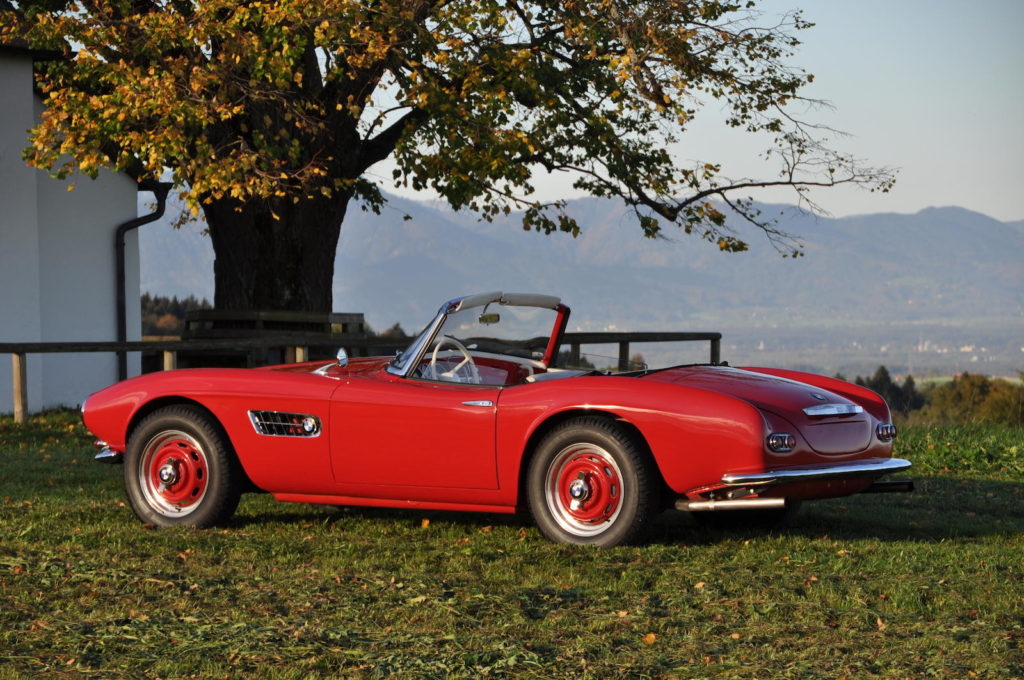
Although many reading this are already familiar, the 507, thanks to production cost overruns and an expensive design as a whole nearly bankrupted BMW and put the company on a path that almost allowed for it to be absorbed by what was then referred to as Daimler-Benz. They sure are gorgeous though, aren’t they? Whether one of the eleven incredibly special models with a removable hardtop as linked above, or especially the more available roadster design like what’s on display here, the design remains timeless, and easily ranks among the best of the period from a host of competitors and counterparts.
Park a 507 beside its natural successor, the Z8, and one could easily spend a lengthy bit of time comparing the evolutionary styling and how it was updated and applied to what was then modern platform with much greater performance potential. Throw an early Jaguar E-Type roadster into the mix, along with a modern Aston Martin like a V8 Vantage and perhaps a newer Jag like the current F-Type, and you have an excellent array of two-seaters that demonstrate how such offerings have remained relevant and desirable for over 60 years now—be prepared to notice more than a few similarities between the aforementioned models as well.
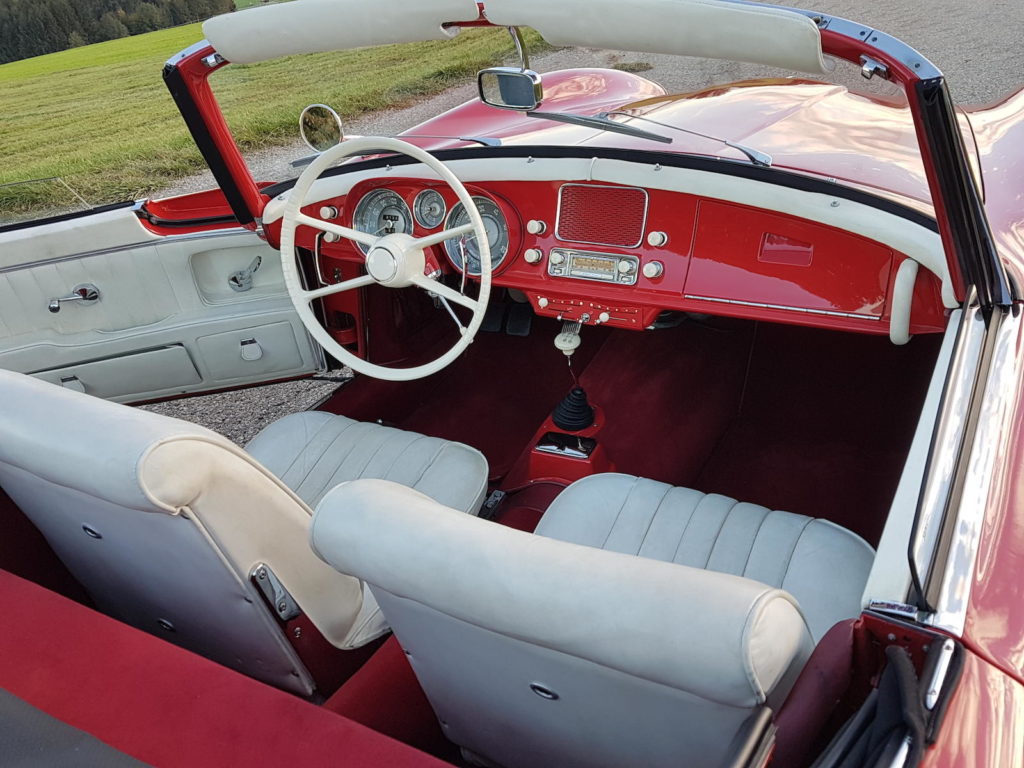
The 507 in question is said to be in good restored condition, with major work having taken place at some point during the 1990’s. High resolution photos show the description to be accurate, with some wear and evidence of use present in a handful of areas on what can be effectively summarized as a clean and nicely kept example. Although red with white interior upholstery is a quintessential 1950’s color combination for the 507 which happens to work quite well on this roadster, the original color was actually silver-grey, perhaps not unlike the Sir John Surtees car linked above.
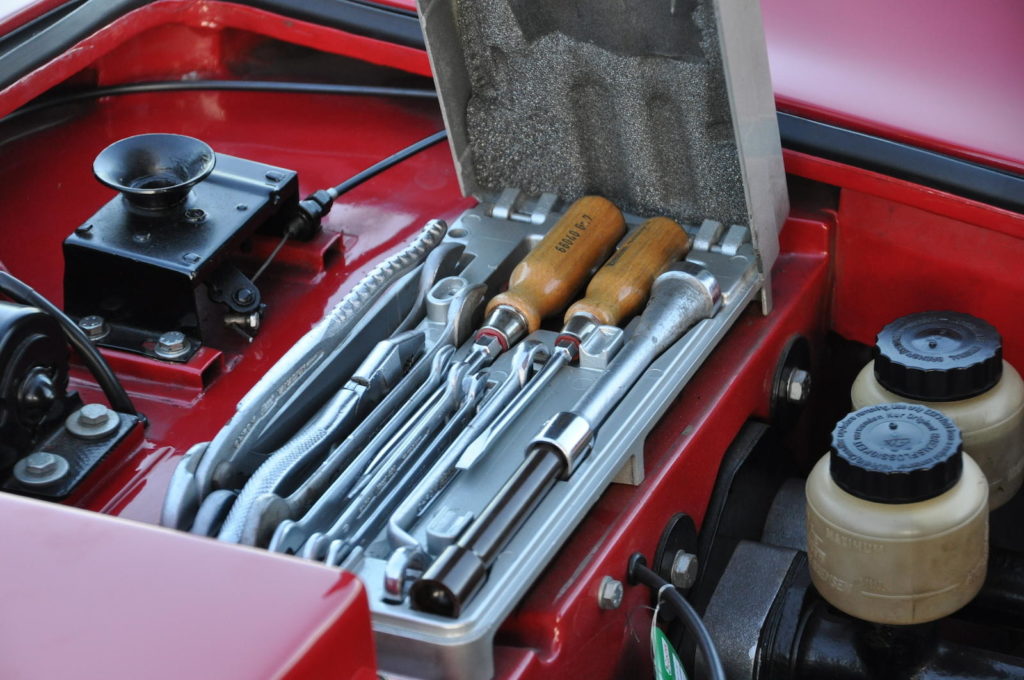
The restoration, which could be approaching 30 years old now, seems to be holding up quite well, and appears to have been a sympathetic affair that was keen on keeping things close to factory original form. Some highlights include the toolkit above and Becker Mexico radio below. Interior upholstery and a few finer points aren’t exact, but still remain close to how things looked when the 507 was being manufactured, while the gauges are the correct VDO units which use a rather cool looking typeface.
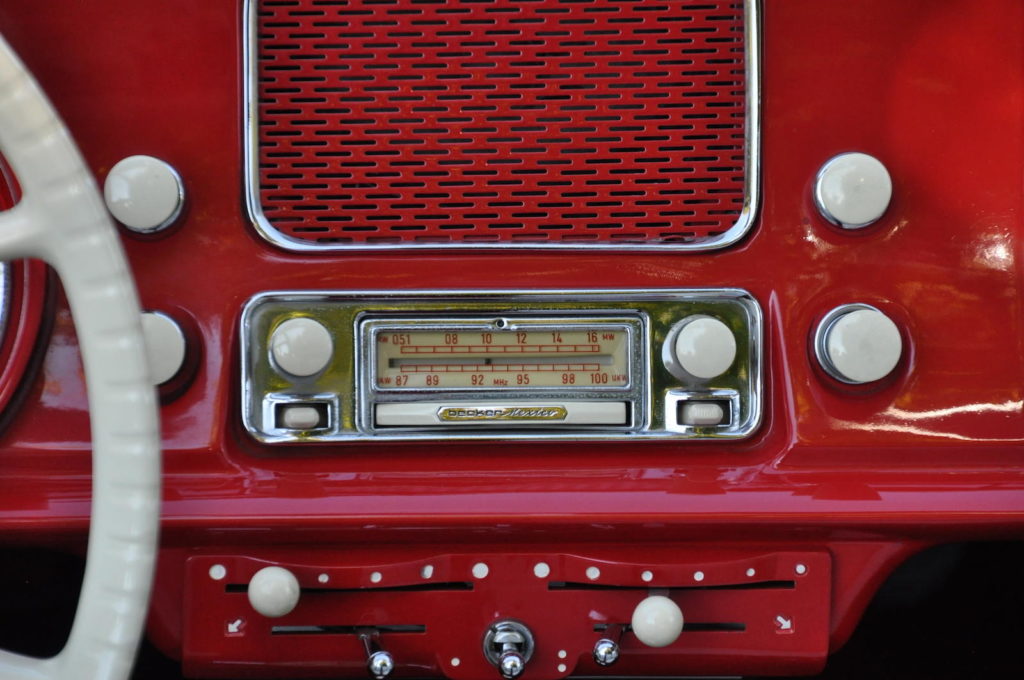
The engine is a rather interesting facet for this particular 507, as something caused the original to require replacement shortly after von Goertz took possession of the car. A new engine was installed by a shop called Autohaus Martini, and original paperwork like the BMW guarantee is said to be included with the sale. Of course, the power plant of the 507 has always been an interesting discussion point, thanks to its contemporary pushrod design derived from the new-for-1949 Oldsmobile Rocket, executed with all-aluminum construction.
The underlying design debuted as a 2.6-liter unit for 1954, and saw continued production until 1963. The version fitted to the 507 displaces 3.2 liters, is naturally referred to as M507/1, and develops 150 horsepower at 5,000 rpm and 177 lb. ft. of torque at 4,000. A handful of different carburetors were fixed to the top of the V8 engine throughout its production lifetime, but all 507’s use dual two-barrel Zenith 32 NDIX units which, together with a few other internal changes, allowed for the highest output of the 1950’s before slightly larger carbs were fitted for 160 horses during the early 1960’s.
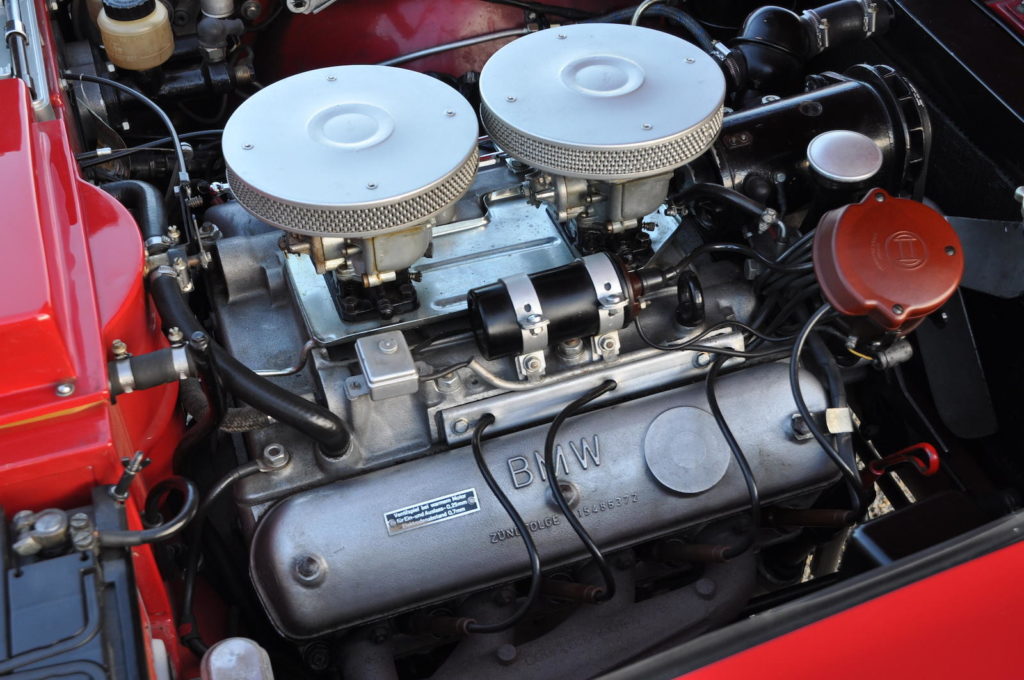
Performance was quite respectable for the era, even though the shortened but still quite heavy 503 frame necessitated the use of an aluminum body which translated to curb weight just below 3,000 pounds. A top speed of 122 mph was achievable, while the sprint from zero to 100 kmh (62 mph) occurs in just over eleven seconds. The engine bay of this one, despite containing a replacement long block and and having been restored, appears to follow factory form quite nicely. The air cleaners resemble the original design, along with various other components and parts that appear readily in view like the Bosch distributor, for example.
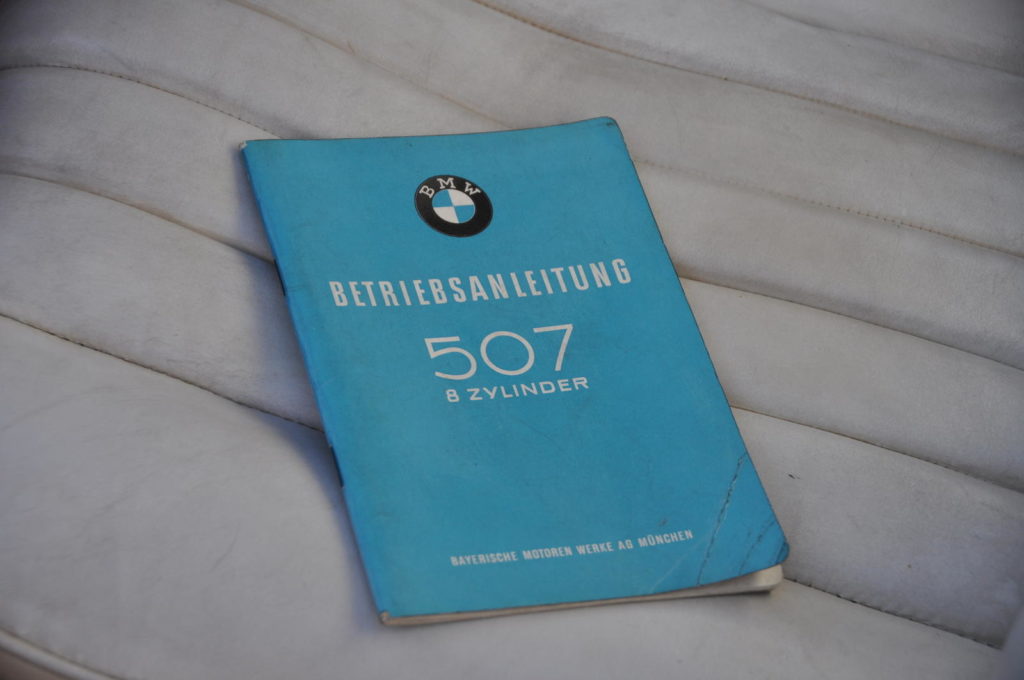
With remarkable provenance and what appears to be strong condition, this 507 seems like a great example of one of the most iconic BMW models of all time. It will be interesting, exciting and educational to see where it lands in terms of a hammer price, considering all that makes it stand out among the rest. Of course, if you can’t afford the entry price of a well-kept 507, knock a zero off and go for a Z8, which Hagerty assigns a condition #1 value of just under $300,000 to. —Alex Tock
[Photos via Bonhams.]

